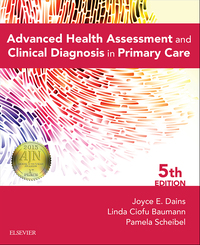「重要なお知らせ:日本語書籍をご購入いただき、eLibraryをご利用の皆さまへ」
エルゼビアは、より快適にサービスをご利用いただくため、システムの重要なアップデートを実施いたします。
現在、新サイト、eBooks+への移行が進められています。
新規ユーザー登録および書籍の登録はElsevier eLibraryでは停止しております。
12月15日以降に
こちらよりご利用・ご登録ください。
Advanced Health Assessment & Clinical Diagnosis in Primary Care - E-Book






Book Description
Take the ‘next step’ in health assessment! Advanced Health Assessment and Clinical Diagnosis in Primary Care, 5th Edition goes beyond basic history and physical examination to help you master the diagnostic reasoning process. You’ll develop this key skill by following assessment guidelines that focus on a specific complaint rather than beginning with a previously established diagnosis or disease entity. Written by advanced practice nursing experts Joyce Dains, Linda Baumann, and Pamela Scheibel, this edition includes new chapters on evidence-based preventive health screening and on heartburn and indigestion, along with a new full-color design. Master the differential diagnosis process outlined in this book, and you’ll be able to accurately diagnose the majority of patients seen in today’s primary care settings.
- A clear, consistent diagnostic reasoning process takes you to the next step of health assessment — beyond basic history and physical examination to diagnostic reasoning.
- Diagnostic Reasoning: Focused History sections use ‘self-questions’ to walk you through the thinking process involved in obtaining a pertinent, relevant, problem-specific history that will assist in differential diagnosis.
- Diagnostic Reasoning: Focused Physical Examination sections explain how to perform more advanced diagnostic techniques and interpret the findings.
- Key Questions guide you through assessment and toward an accurate diagnosis by listing questions to ask the patient, followed by explanations of what the patient's responses might signify.
- Laboratory and Diagnostic Studies sections outline the types of studies that might be appropriate based on the focused history and focused physical examination.
- Differential Diagnosis sections offer the most common diagnoses for each patient problem and summarize the history and physical examination findings, along with recommended laboratory and diagnostic studies.
- Differential Diagnosis tables provide a quick-reference summary of possible diagnoses for each patient problem.
- Evidence-Based Practice boxes — more than 30 are NEW — summarize the scientific evidence related to the diagnosis of patient problems.
- Alphabetical Table of Contents provides a convenient listing of common health problems.


 (0 rating)
(0 rating)